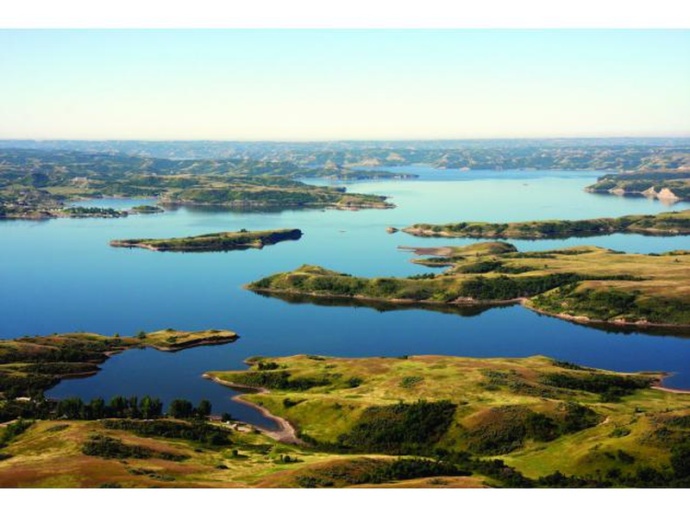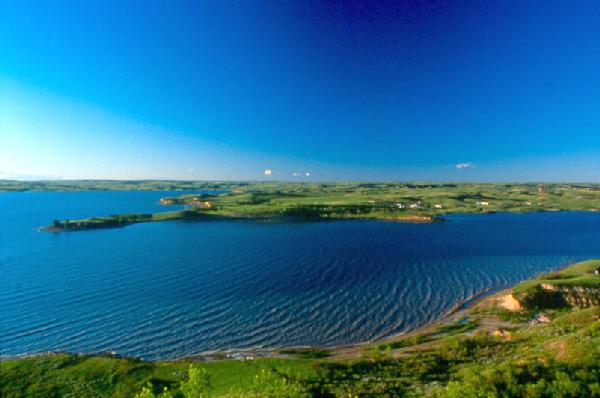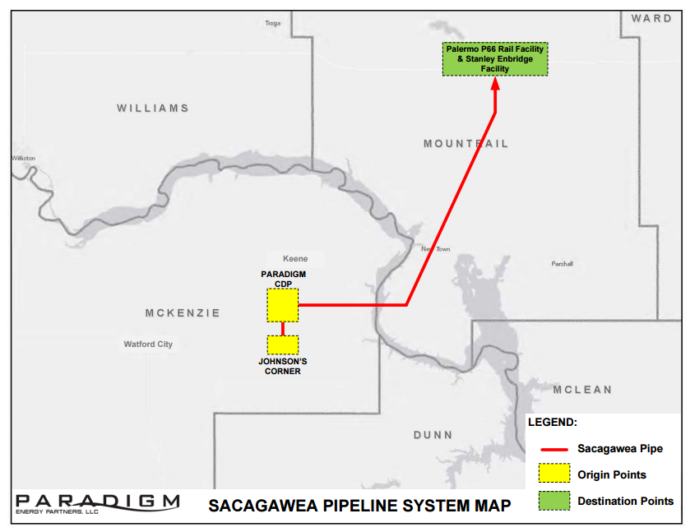December 5, 2016
Part one of a 6-part series and addendum.
An Investigative Report Series [Further Reading]: Part 1 • Part 2 • Part 3 • Part 4 • Part 5 • Part 6 • Addendum
“While the world celebrates from the pause the Army Corps Of Engineers has forced in the development of the Dakota Access Pipeline, Cory Morningstar strings together an important and critical history of the environmental and climate change movement. The funders of this nonviolent, peaceful, prayerful resistance are the exact individuals who profit from an oil-railroad-transport industry that can only survive when pipeline projects are defeated. Solar power projects and “coal-free” investment portfolios rise in value as indigenous youth are arrested and maced. The recent history is a pattern minimally documented via alternative news and with relatively little critical oversight.”
All Eyes Off the Sacagawea Pipeline
n the article “All Eyes On Dakota Access – All Eyes Off Bakken Genocide” published September 13, 2016 by Wrong Kind of Green, a pipeline was highlighted that the non-profit industrial complex (NPIC) has absolutely no interest in discussing: The *Sacagawea Pipeline (*Hidatsa, North Dakota spelling) which will carry Bakken crude under Lake Sakakawea – the source of drinking water for several western North Dakota cities.
Lake Sakakawea: Credit: North Dakota Tourism Department
Above: Lake Sakakawea
Consider the August 5, 2016 article, “Former Worker Says Lake at Risk of Oil Leak, Pipeline Contractor Defends Workmanship”:
“A former crew member on an oil pipeline under construction in North Dakota claims that pipe installed under Lake Sakakawea was not properly inspected and he fears the lake could be at risk… Pipeline contractor Kenny Crase writes in a sworn statement filed with the PSC and federal regulators that he was ordered to skip a final coating inspection on a section of the Sacagawea Pipeline before another contractor installed the pipe under Lake Sakakawea in July. External coating protects the steel pipe from corrosion. To me, it’s an accident waiting to happen.” — Pipeline contractor and whistleblower, Kenny Crase
Crase, a pipeline contractor with 34 years of experience (including five years as a pipeline inspector) was fired by contractor Boyd & Co. for exposing the “defects in the pipe coating that could cause oil to spill in the reservoir”. It is worth repeating that this reservoir serves as the source of drinking water for several western North Dakota cities.
According to Crase, “the coating crew was not allowed to complete their work. In addition, the crew was told to stay in their trucks and not allowed to do a final inspection of the coating as another contractor installed the pipe under the lake.”
“I cringed when they hooked to it and pulled it because we never made a single run through there when we didn’t find holidays, which is bare metal. If I was a betting man, I’d bet there’s bare metal spots.”— Kenny Crase
“It’s frightening to think that pipe could have been pulled under Lake Sakakawea without being properly inspected.” — Kevin Pranis, spokesman for the Laborers Union
So, why was there no interest by Non-Governmental Organizations (NGOs) in a pipeline that even evoked fear in the Labourers Union? We summarized as follows: “What is absolute is that it is those who own the media (not coincidentally, the same elites that own the Non-Profit Industrial Complex) that decide on who and what the media spotlight will shine upon. Native land defenders are essentially ignored, unless it furthers elite interests.
But it’s actually much simpler than that. The NGOs that comprise the Non-Profit Industrial Complex (NPIC) have no interest in this pipeline – or the water source they proclaim to care so deeply about – not simply because the tribes (Grey Wolf Midstream) have a financial stake in the project (a mere 12%). Rather, it is because the Sakakawea serves Warren Buffett’s interests via the expansion of rail infrastructure and terminals.
Sierra Club banner presented to Standing Rock
To be clear, NGOs that comprise the NPIC do not care about native sovereignty issues, as demonstrated by Sierra Club representing Standing Sioux Rock Nation as legal Counsel (via Earth Justice). Native tribal law is a very sensitive and specialized area, usually comprised/represented of native attorneys or tribal law experts for this very reason.
Most recently (November 15, 2016) seven environmental groups including the Sierra Club and National Resources Defense Council settled with BNSF (Warren Buffet’s railroad line) for coal train violations: “BNSF does not admit to any violations of the Clean Water Act, but has agreed to pay one million for environmental projects in Washington state.” [“The $1 million that BNSF will pay is a small fraction of the penalties it might have incurred if found in violation of the Clean Water Act, which Wallace said could have been in the trillions. ] The article notes that “whereas violation fees would have gone to the U.S. Treasury, these payments will be spent locally.” Whose bank account the one million dollar funds are deposited into and to which environmental projects they are distributed AND at whose discretion the one million dollars is spent is not disclosed. Yet it is safe to assume it is at the discretion of the seven NGOs who brought the suit forward. The seven NGOs agreed not to bring any similar litigation against BNSF for 5 years.
Tuesday, Sept. 6, 2016: Jan Hasselman, left, representing Standing Rock Sioux Tribe, and Phillip Ellis, right, press secretary for EarthJustice, walk together before speaking to members of the media outside U.S. District Court in Washington, DC. Members of the tribe had petitioned a federal judge to temporarily stop work on parts of the Dakota Access Pipeline to prevent the destruction of sacred and culturally significant sites near Lake Oahe. (AP Photo/Pablo Martinez Monsivais) [Source]
In what is essentially a rinse, lather, repeat performance of Stop the Keystone XL – again, all eyes are now on #NODAPL. At the same time, Buffett is expanding the rail infrastructure for more Bakken crude to move across North America with absolutely zero dissent. More crude means the ongoing genocide of Indigenous people and nations in the Bakken will only accelerate.
The difference in the two campaigns (NOKXL vs. NODAPL) is the presence of Indigenous leadership in the latter, which continues to be undermined by NGOs within the Non-Profit Industrial Complex. However, as the indigenous are out front in regards to this movement, any critical analysis, such as this one, makes one subject to being framed as “anti-Indian” or “anti-solidarity” when that is not the case. The presence of Indigenous leadership, that is always strategically kept at arm’s length within the NGO hierarchy, makes this movement almost bullet-proof from any/all investigation or critical analysis.
With that being said, should we be surprised that the resistance to this pipeline by an Indigenous nation was brought to the mainstream by Bold Nebraska – an organization created with start-up money connected to Buffett money? The media’s compliance is creating the snow-ball effect that we witness today and demonstrates a carefully orchestrated strategy. [Further reading on Jane Kleeb’s Bold Nebraska: All Eyes On Dakota Access – All Eyes Off Bakken Genocide, Subsection, Hero Worship in Death Cult]
Seed money for Kleeb’s organization was provided by the late Richard Holland…. Holland, ‘the Nebraska advertising executive who helped link up one of the great partnerships in business history, the one between Berkshire Hathaway Inc. Chairman Warren Buffett and his deputy, Charles Munger.'” – All Eyes On Dakota Access – All Eyes Off Bakken Genocide
August 12, 2016, from the article Big Dakota pipeline to upend oil delivery in U.S.:
“BNSF Railway declined to discuss future freight movements, but said that at its peak, it transported as many as 12 trains daily filled with crude, primarily from the Bakken. Today, it is moving less than half of that….
It may seem odd that the opening of one pipeline crossing through four U.S. Midwest states could upend the rail-based movement of oil throughout the country, but the Dakota Access line may do just that.
Currently, crude oil moving out of North Dakota’s prolific Bakken shale to ‘refinery row’ in the U.S. Gulf must travel a circuitous route through the Rocky Mountains or the Midwest and into Oklahoma, before heading south to the Gulf of Mexico.
The 450,000 barrel-per-day Dakota Access line, when it opens in the fourth quarter, will change that by providing U.S. Gulf refiners another option for crude supply.
Gulf Coast refiners and North Dakota oil producers will reap the benefits. Losers will include the struggling oil-by-rail industry which now brings crude to the coasts.
Moving crude by pipeline is generally cheaper than using railcars. The flagging U.S. crude-by-rail industry already is moving only half as much oil as it did two years ago: volumes peaked at 944,000 bpd in October 2014, but were around just 400,000 bpd in May, according to the U.S. Energy Department.
Ponderosa Advisors estimated that the start-up of the pipeline could reroute an additional 150,000 to 200,000 bpd currently carried by rail to the U.S. East Coast and Gulf Coast…
May 6, 2016, Bloomberg: “More recently, BNSF has been cutting staff after low oil prices and a nationwide shift away from coal have depressed demand for shipping.” [Source]
Due to “a global economy near stall speed” (Larry Summers, October 7, 2015) there is a massive surplus of oil that has resulted in a more than 50% decline in crude shipments via rail. This decrease in rail revenue would be compounded by the loss of an additional 150,000 to 200,000 barrels per day (bpd) currently carried by rail that would be lost to the Dakota pipeline once in operation. This is not a scenario Buffett nor his BNSF shareholders would likely be happy with since the 750 rail cars currently used to transport this oil would disappear into thin air. This would reflect negatively on the BNSF balance sheet and, most importantly, the stock price. [Source]
February 4, 2016, the article “U.S. Crude By Rail Industry Slows Down After Six Years of Rapid Growth,” declares that “the loading of crude oil at more than a dozen North Dakota rail terminals now faces a financial squeeze.”
And confirming more of the same:
The delay of the Dakota Access pipeline could help stabilize crude-via-rail:
“Erika Coombs, energy analyst for BTU Analytics in Lakewood, Colo., said the Sandpiper delay and potential delay in another proposed Bakken pipeline though Iowa could help stabilize the crude-by-rail industry. ‘If both pipelines are delayed or don’t get built, those are volumes that need to continue to move by rail,’ Coombs said.”
But it’s more than that since the intricate nature of the fossil fuel industry and bringing foul, dirty energy to market can make one pipeline a foe and another one a friend. Hence, whereas the delay of the Dakota Access serves the interests of BNSF via feigning off unwanted competition in harsh economic conditions, the expedient completion of the Sacagawea Pipeline (under Lake Sakakawea) serves BNSF’s interests. This is why NGOs are not highlighting or assisting Indigenous resistance to it, even when they have ample evidence (provided by the aforementioned courageous whistleblower Kenny Crase and the Labourers union) to hinder the project which could never be more in their favor and gain the support of public opinion due to the current political climate at the grassroots level. The Sacagawea Pipeline pipeline is an immense benefit to BNSF.
[Gloat Like Rockefeller When Watching Trains: Keystone XL: The Art of NGO Discourse | Part I ]
“On September 16, 2016 Federal Judge Daniel Hovland has struck down a restraining order from the Three Affiliated Tribes and Chairman Mark Fox against Paradigm Energy Partners, LLC drilling two pipelines, one for natural gas and the other for oil, underneath Lake Sakakawea, allowing the project to continue. Paradigm Energy Partners is building the pipeline for Sacagawea Pipeline Company, a joint venture owned 50 percent by Phillips 66 Partners. Fox and the Three Affiliated Tribes filed for the restraining order against Paradigm Energy Partners, LLC, on August 19 for their construction of the Sacagawea Pipeline.” [Source]
Two years earlier…on November 21, 2014, from the article Phillips 66 Partners Teams Up to Move Bakken Crude:
“The Sacagawea pipeline will connect to a 710-acre rail terminal in Palermo, which is expected to provide access to the East and West coasts through the BNSF railway. Designs call for the Palermo Rail Terminal to have an initial capacity of 100,000 barrels per day, with the flexibility to expand to 200,000 barrels per day. The two companies will share construction costs and Phillips 66 will own and operate the terminal.”
The Sacagawea Pipeline Company is developing the Sacagawea pipeline to deliver crude from points in McKenzie and Dunn Counties south of the river to points north of Lake Sacagawea. “Sacagawea Pipeline Company is a joint venture between Paradigm Energy Partners, *Phillips 66 Partners, and Grey Wolf Midstream. Grey Wolf Midstream is an affiliate of Missouri River Resources, a Three Affiliated Tribes chartered energy company in North Dakota.” The Three Affiliated Tribes are the Mandan, Hidatsa, and Sahnish (Arikara) (MHA). [*Buffett’s firm Berkshire Hathaway now owns 14% of Phillips 66 shares, making it Berkshire’s sixth largest holding. Source: Warren Buffett’s $1 billion bet on oil, February 5, 2016][“Joint partner” Grey Wolf Midstream owns a mere 12%.]
“In statements and in meetings with surface transportation authorities, railroads such as Warren Buffett’s BNSF Railway Co. have denied putting crude oil on the fast track over grains… BNSF is on track to invest a record $6 billion in its domestic track network this year to help relieve the stress, and other railroads have followed suit with their own multibillion-dollar pledges.” — Farm group sees oil pipelines easing everyone’s rail congestion, July 27, 2015
“Paradigm’s Bakken efforts are focused on creating integrated crude gathering, storage, transportation and rail solutions that provide producers with economic outbound optionality and premium multi-market access.” — Paradigm Energy Partners website
March 9, 2016, from the article Paradigm Midstream Services to build new crude gathering system:
“‘Our game plan is to connect to all the downstream markets and help facilitate more competition for the producers…It’s furthering our strategy of adding more gathering assets to our larger system, which adds a lot of storage and transportation to a lot of the different markets within the Bakken.’
Under the agreement—secured through an acreage dedication—the 23-mile-long gathering system will deliver approximately 17,000 acres of production from the Ross Field in northern Mountrail County to Paradigm Energy’s joint venture rail terminal in Palermo, North Dakota.
From Palermo, producers will have access to East and West Coast markets via the BNSF Railway, as well as downstream markets near Stanley where Paradigm Energy has other pipeline connections…
In January, the North Dakota Public Service Commission approved a siting permit for a $125 million pipeline to be built by Sacagawea Pipeline Co. that will carry Bakken crude under Lake Sakakawea. The Sacagawea Pipeline Project is a new 70-mile long, 16-inch diameter pipeline and associated facilities in McKenzie and Mountrail counties.”
Image: Paradigm North Dakota System: The 710 acre Palermo Rail Terminal will serve the BNSF line and has initial plans to include 100 MBbl/d loading capacity and 300 MBbl of operational storage. Rail Facility Detail:710 Acre footprint with 2.5 miles of rail frontage, initial design for up to 100 MBbl/d, six truck off loading lanes with room for expansion 14 high-speed loading arms, capable of loading a full train in 13 hours (expandable to 28 arms on second loop), and three loop track design allows for expansion to 2+ unit trains per day. Provides adequate staging off BNSF Main Line. 2 x 103 MBbl tanks, with two additional tanks planned. [Source]
The Sacagawea Pipeline and Palermo Rail Terminal are designed to enhance logistical options for crude oil transportation in the Bakken region. Phillips 66 Partners and Paradigm will each own a 50 percent interest in the Sacagawea Pipeline. The Palermo Rail Terminal is owned 70 percent by Phillips 66 Partners, with Paradigm owning the remaining 30 percent interest.
[At this point, it’s important to keep in mind that aside from Buffett’s Berkshire owning BNSF, Phillips 66 is Berkshire’s sixth largest holding.][Further reading: Keystone XL: The Art of NGO Discourse | Part I, April 12, 2013]
In summary:
“The Sacagawea Pipeline will own an 88 percent interest in Sacagawea Pipeline Company, LLC, the owner of the Sacagawea Pipeline with the remaining 12 percent interest owned by Grey Wolf Midstream, LLC. Additionally, the Sacagawea Pipeline will construct and own a crude oil storage terminal and central delivery point for various crude gathering systems located in Keene, North Dakota (the “Keene CDP”). The Sacagawea Pipeline project is a 91-mile pipeline being developed to deliver crude oil from various points in and around Johnson’s Corner and the Paradigm CDP, located in McKenzie County, North Dakota, to destinations with take away options for both rail and pipeline in Palermo and Stanley, North Dakota. Paradigm is constructing the pipeline and Phillips 66 Partners will be the operator (of Keene CDP, Sacagawea Pipeline, and the Palermo Rail Terminal). The pipeline is anticipated to commence operations in the third quarter of 2016.” [Source]
“The Palermo Rail Terminal consists of a crude oil rail-loading facility currently under construction on a 710-acre site near Palermo, North Dakota. The terminal will have an initial capacity of 100,000 barrels per day, with the flexibility to be expanded to 200,000 barrels per day. It is located on a railway main line with two mainline switches, allowing east- and west-bound rail traffic. The terminal is anticipated to include a pipeline delivery and receipt connection to the Sacagawea Pipeline, allowing the terminal to receive crude oil from areas in Dunn and McKenzie County, North Dakota, and deliver it to terminals and pipelines located in Stanley, North Dakota. The terminal will also include adequate space for up to 12 truck unloading facilities and approximately 300,000 barrels of operational storage, with permits allowing total storage capacity of up to 2.4 million barrels. The terminal is anticipated to be completed and in service in the fourth quarter of 2015.” [Source]
“The boom would not be as big, nor would it have happened as fast, without BNSF, owned by Warren Buffett’s Berkshire Hathaway Inc. Because of limited pipeline capacity in the region, there would be no place for much of the oil to go. BNSF says it is transporting more than half of the oil produced in the North Dakota and Montana regions of the Bakken. Pipelines and a rail competitor, Canadian Pacific, get much of the rest. Most of the oil comes from North Dakota…” — Without BNSF, the Great North Dakota Oil Boom Wouldn’t Be As Big, June 8, 2013
When analyzing the Dakota Access pipeline campaign whereby a key slogan for the resistance is the expression “water is life”, one might ask: which water? which life? Is it that all lakes are equal, but some lakes are more equal than others? Such appears to be the case for Lake Sakakawea.
The production and infrastructure for Bakken crude continues to expand. The genocide and ecological devastation it propels also expands simultaneously. Grey Wolf Midstream holds a 12 percent interest with the Indigenous having to endure 100% of the devastating impacts.
+++
Can a Rich Culture Rooted in Warrior Ideology be Tamed through Nonviolent Direct Action Training?
Photo: Mohawk Warriors, Oka Crisis, Canada, 1990. Photograph: Armed warriors at Kanesatake during the 1990 “Oka Crisis.” / Gazette John Mahoney (CTY).
In the summer of 1990 the Kanesatake Mohawks erected a protest camp and barricades on the road to the proposed development site of a members-only golf course and luxury condo development on a pine grove and cemetery where many Mohawk families’ ancestors were buried. A standoff with the state ensued. “The army had tanks, armored personnel carriers, helicopters and surveillance planes. The Mohawk warriors had a few hundred weapons, including AK-47s, hunting rifles and shotguns. With some clever psychological warfare, however, they projected a much more intimidating presence.” The golf course/development which triggered the 78-day crisis was never built. [Source]
“The Mohawks used a variety of homemade devices to imitate the high-powered weapons the army thought they had. A circular cutting tool used in ironworking became an imitation M72 rocket launcher. An ordinary black plumbing tube was placed in the back of a pick-up truck and camouflaged so that it resembled an anti-tank missile launcher…. They wandered around an empty field, looking at a map, to pretend they were picking their way through a minefield. It was all part of a deliberate strategy to keep their enemies off guard and confused.” — Geoffrey York & Loreen Pindera, “People of the Pines: The Warriors & the Legacy of Oka,” 1992
At this juncture it remains unclear if the interest in Standing Rock by the NPIC is exclusively to protect Warren Buffett’s rail investments (BNSF) in an already weak economy … or, if it is that the NGOs that comprise the NPIC (functioning on a foundation of white supremacist ideology) simply cannot resist the opportunity to colonize the remaining Indigenous nations/peoples that have not yet been assimilated by the church[1] or if this is simply an experiment. Perhaps this is a large scale experiment to study whether methods of nonviolent direct action (NVDA) as the only acceptable means to confront state violence and/or oppression can be successfully applied to the only remaining group of people the state still fears: Indigenous nations. Perhaps this is an experiment in creating a passive citizenry via framing and training in NVDA.
By using the same isolation tactics, reward system, and revisionist history/story-telling carried out again and again over the past few decades via the NGOs and media that comprise the NPIC (intensifying after 1999 WTO Seattle protests), has the hegemonic system reached its maximum potential in the pacification and obedience of the liberal masses in the face of chaos as we head into a far more chaotic, increasingly fascist and uncertain planet in great peril?
Can the same behavior modification, social engineering, societal conditioning and religious indoctrination of whole societies be applied to control and tame Indigenous peoples who embody a deep-rooted (and enviable) warrior ideology? Can the first group influence the latter? Perhaps the best answer is that Standing Rock is the killing of three birds with one stone. [1) Protection of BNSF profits, 2) Continued colonization of Indigenous Peoples, 3) An integral observation lab to study NVDA training impacts/results on non-Anglo cultures in recognition that NGOs are now rolling out NVDA training “programs” across the globe.
One thing is certain. The 2011 observation of a collective “pacifism as pathology” syndrome-like conformity continues to surpass all expectations:
“During the November 2 briefing in the Cannon Ball Community Center, Floberg reminded participants that they signed a pledge to keep the Standing Rock events of November 3 prayerful, peaceful, nonviolent and lawful. There were some who called for a more aggressive front-line approach elsewhere.” — Nov 4, 2016, Peaceful, Prayerful, Nonviolent Stand of Solidarity With the Standing Rock Sioux
To illustrate how religion is used for indoctrination and mitigation purposes regarding the disenfranchised, note that Rev. John Floberg “is the supervising priest of the three Episcopal missions on the North Dakota side of the Standing Rock Reservation; there are six more mission churches on the reservation in South Dakota.”
Not surprising, 350.org founder Bill McKibben (a lay-Methodist) has a tight relationship with the Episcopal Church. [2] Colonization and assimilation via residential schools – where physical and psychological abuse was rampant – is considered by most today a horrific and shameful part of our collective history, although it came to a close not even a single lifetime ago. Yet, when these same ideals are repackaged as solidarity and dispersed via the NPIC, the only response is a silent adoration from those who believe their own cultural belief system upholds a moral superiority.
+++
Next: Part 2
End Notes:
[1] “Morse further wrote in his report: “The complete title to their [the Indians’] lands, rests in the government of the United States” (original emphasis). Notice that Morse’s use of “complete” contrasts with what he had written about the Indian title to the soil being “imperfect,” meaning “incomplete.” The title of the nations of Christendom, which Judge Catron called “every Christian power,” was regarded as “complete” or perfect (as in “perfect dominion”), whereas the title and independence of non-Christian “heathen-infidel” nations was regarded by the Christian powers as “imperfect” and incomplete.
So far as the U.S. government, including the Army Corps of Engineers, is concerned, the “heathen-infidel” Standing Rock Sioux Tribe and the Oceti Sakowin(“Great Sioux Nation”) may not contradict what the United States wants to do with the treaty-recognized territory of the Oceti Sakowin. This is because, based on the ideas of U.S. federal Indian law traced to Christendom’s law of nations, the original title of any “heathen-infidel” Indian nation is only an “imperfect title” of “mere occupancy” in the soil to which the U.S. claims a Christian “ultimate dominion.” [The Dakota Access Pipeline and ‘the Law of Christendom, August 26, 2016]
[2] April 24, 2012: “Episcopalians join religious voices at climate change conference” – “After opening calls to action from James Hansen, a scientist credited with bringing global warming to the world’s attention, and Bill McKibben, founder of the grassroots climate campaign 350.org, participants attended break-out sessions in three focus areas: science, religion and culture.” [http://episcopaldigitalnetwork.com/ens/2012/04/24/episcopalians-join-religious-voice-at-climate-change-conference/]
May 4, 2012: “Diocese of Vermont dedicates 35-panel solar installation” – “Environmentalist Bill McKibben, Congressman Peter Welch, Burlington Mayor Miro Weinberger were among the featured speakers at the celebration and formal dedication on April 30.” [http://episcopaldigitalnetwork.com/ens/2012/05/04/diocese-of-vermont-dedicates-35-panel-solar-installation/]
April 29, 2013: “Presiding bishop preaches at ‘climate revival’ – “In addition to Jefferts Schori, the event was lead by the Rev. Geoffrey Black, general minister and president of the United Church of Christ, and included video messages from Archbishop Emeritus Desmond Tutu and Bill McKibben, an author, environmentalist and the founder of 350.org, a global grassroots movement aimed at solving the crisis of climate change.” [http://episcopaldigitalnetwork.com/ens/2013/04/29/presiding-bishop-preaches-at-climate-revival/]
May 8, 2013: “Rising with Christ: Confronting climate change” – “On April 27, 2013, the Climate Revival in downtown Boston gathered clergy and hundreds of Christians from across New England to participate in a morning and afternoon worship service in two historic churches – Old South Church and Trinity Church. Billed as “an ecumenical festival to embolden the renewal of Creation,” the Climate Revival traced the arc of the story of Lazarus as we listened for God’s consoling, chastening, and encouraging Word in relation to the climate crisis. Bill McKibben and Archbishop Desmond Tutu joined us by recorded video, and Presiding Bishop Katharine Jefferts Schori preached an extraordinary sermon about the raising of Lazarus.” [http://episcopaldigitalnetwork.com/ens/2013/05/08/rising-with-christ-confronting-climate-change/]
FURTHER READING:
Keystone XL: The Art of NGO Discourse – Part III | Beholden to Buffett
Keystone XL: The Art of NGO Discourse – Part IV | Buffett Acquires the Non-Profit Industrial Complex







 Become a Patron!
Become a Patron!